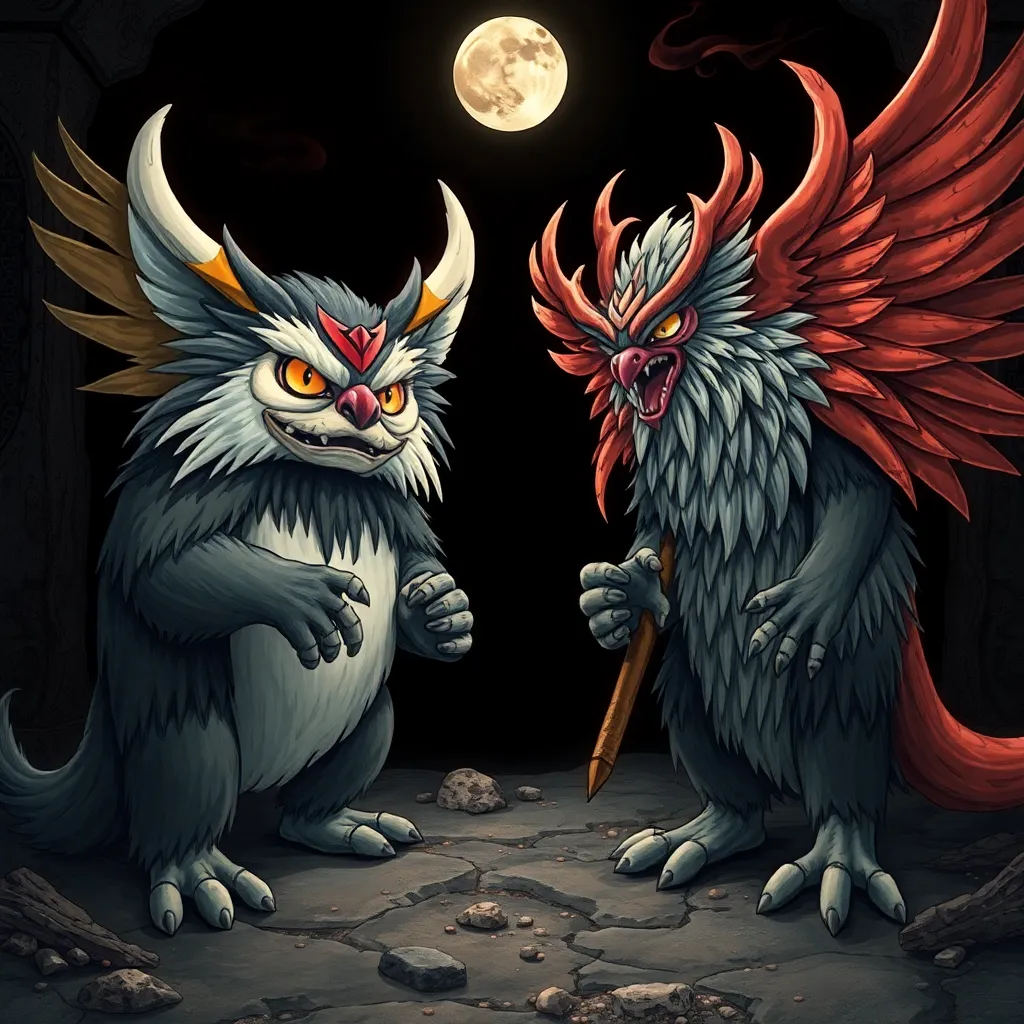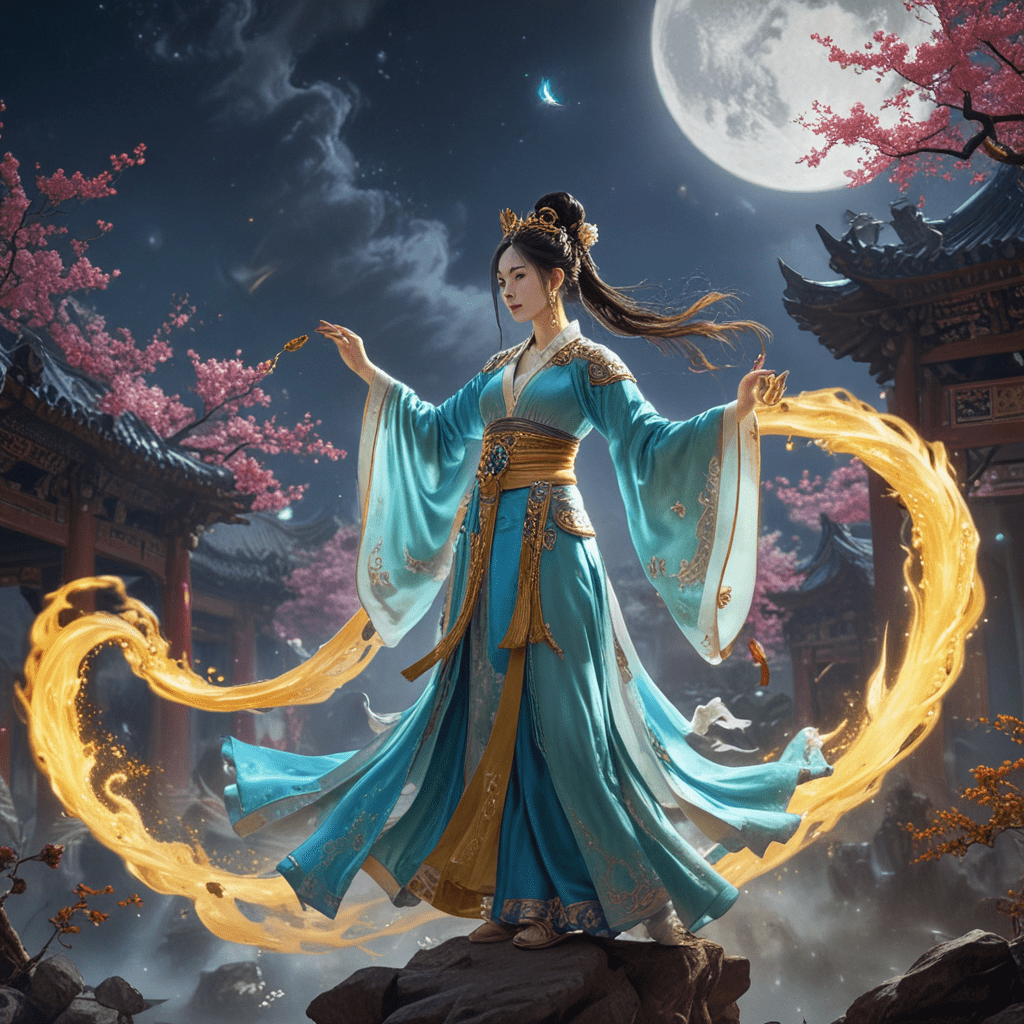Tanuki vs. Tengu: Exploring the Differences in Japanese Mythology
I. Introduction
Japanese mythology is a rich tapestry of stories, beliefs, and figures that have shaped the cultural landscape of Japan for centuries. Among the various creatures that populate this mythology, Tanuki and Tengu stand out as two of the most intriguing and complex figures.
Tanuki, often depicted as playful and mischievous, and Tengu, characterized by their martial prowess and wisdom, have captivated the imagination of the Japanese people. This article aims to explore and compare these two mythical creatures, delving into their origins, characteristics, cultural representations, abilities, roles in mythology, and their modern interpretations.
II. Origins and Historical Background
A. Historical roots of Tanuki in Japanese culture
The Tanuki, or raccoon dog, has deep roots in Japanese culture, dating back to ancient times. Initially, Tanuki were seen as simple animals, but over time they became entrenched in folklore as supernatural beings capable of shape-shifting. Their association with prosperity and fertility is reflected in various cultural symbols, such as the popular Tanuki statues found outside restaurants and shops, believed to bring good fortune.
B. The emergence of Tengu in folklore
Tengu, on the other hand, have a more complex origin. Initially considered to be celestial beings, Tengu evolved into figures associated with the mountains and forests, often portrayed as protectors of the natural world. Their depiction transitioned from benevolent spirits to mischievous and sometimes malevolent creatures, reflecting societal attitudes towards nature and spirituality.
C. Influence of Buddhism and Shinto on their development
The development of both Tanuki and Tengu has been significantly influenced by the Shinto and Buddhist traditions. Tanuki are often linked to Shinto beliefs around fertility and abundance, while Tengu are associated with Buddhist teachings on self-discipline and enlightenment. These influences have shaped their narratives and roles within Japanese mythology.
III. Physical Characteristics
A. Description of Tanuki appearance and attributes
Tanuki are typically depicted as small, round creatures resembling raccoon dogs, with a distinctive face and large eyes. They are often shown with a big belly, symbolizing their playful nature and association with abundance. Tanuki are also known for their ability to transform into various shapes, a characteristic that emphasizes their magical qualities.
B. Examination of Tengu’s physical traits and variations
Tengu, in contrast, have a more varied appearance. Traditionally, they are depicted with a long nose and red face, sometimes sporting a beak-like mouth. Their attire often resembles that of a warrior, complete with a sword and a feathered hat, indicating their martial background. There are two main types of Tengu: the Karasu Tengu (crow Tengu), which have bird-like features, and the Yamabushi Tengu, who resemble ascetic monks.
C. Symbolic meanings associated with their appearances
The physical traits of both Tanuki and Tengu carry symbolic meanings. Tanuki’s roundness and jovial appearance symbolize playfulness and fertility, while Tengu’s warrior-like features embody strength, discipline, and the protective nature of the mountains.
IV. Cultural Representations
A. Tanuki in art, literature, and popular culture
Throughout history, Tanuki have been prominent in Japanese art and literature. They appear in numerous folktales, woodblock prints, and even modern films and animations. In contemporary culture, Tanuki have become popular characters in merchandise, often portrayed as cute and humorous figures, reflecting their playful essence.
B. Tengu’s representation in traditional and contemporary media
Tengu have also found their way into various forms of media. They are featured in traditional kabuki theater, ukiyo-e prints, and modern anime and video games. Tengu are often depicted as wise mentors or formidable foes, showcasing their dual nature as protectors and tricksters.
C. How these representations reflect societal values and beliefs
The cultural representations of Tanuki and Tengu reflect broader societal values and beliefs. Tanuki embody the importance of play and humor in Japanese culture, while Tengu’s portrayal highlights the respect for nature, martial skill, and the quest for enlightenment. Both figures serve as conduits for cultural expression, illustrating the complexities of Japanese folklore.
V. Abilities and Powers
A. Tanuki’s shape-shifting abilities and magical powers
One of the most defining features of Tanuki in folklore is their shape-shifting ability. They can transform into various objects and beings, often to trick humans or to escape danger. This magical power is a central theme in Tanuki stories, emphasizing their cunning and playful nature.
B. Tengu’s martial skills and supernatural abilities
Tengu are renowned for their martial arts skills and supernatural abilities. They are often depicted as skilled fighters capable of flying, controlling the wind, and possessing heightened senses. Their wisdom and training in the mountains make them formidable opponents, often tasked with protecting sacred spaces.
C. Comparison of their powers and the roles they play in folklore
While both Tanuki and Tengu possess magical abilities, their roles in folklore differ significantly. Tanuki use their powers primarily for mischief and trickery, often with humorous outcomes. In contrast, Tengu use their abilities for protection, guidance, and sometimes punishment, reflecting a more serious and disciplined role in Japanese mythology.
VI. Roles in Mythology and Folktales
A. Common stories and legends featuring Tanuki
Tanuki appear in many stories, often involving their transformation abilities. One popular tale is that of the “Bunbuku Chagama,” where a Tanuki transforms into a teapot to help a kind man. This story highlights themes of kindness and the rewards of good deeds.
B. Notable tales involving Tengu and their moral lessons
Tengu are featured in stories that often convey moral lessons. In many tales, they act as guardians of the mountains, punishing those who disrespect nature or engage in wrongful behavior. The story of “Kintaro,” a legendary child raised by Tengu, illustrates the importance of strength, respect, and nature’s guardianship.
C. Analysis of how their roles differ in Japanese folklore
Tanuki are often seen as tricksters who bring lightheartedness to stories, while Tengu serve as guardians and mentors, embodying discipline and respect. This distinction reflects the broader themes of balance between playfulness and seriousness in Japanese culture.
VII. Modern Interpretations and Popularity
A. The resurgence of Tanuki in modern culture (e.g., merchandise, media)
In recent years, Tanuki have seen a resurgence in popularity, particularly in merchandise and media. Their cute and whimsical representations have made them favorites in animation, video games, and toys, appealing to both children and adults.
B. Tengu’s presence in contemporary storytelling and games
Tengu continue to be featured in contemporary storytelling, often portrayed as powerful characters in video games and anime. Their rich lore and dual nature allow for diverse interpretations, appealing to audiences worldwide.
C. The evolving perception of both creatures in a global context
Both Tanuki and Tengu have gained recognition outside Japan, contributing to a global appreciation of Japanese mythology. As cultural exports, they provide insight into Japan’s rich folklore and the underlying values that resonate with people around the world.
VIII. Conclusion
In summary, Tanuki and Tengu are two distinct yet complementary figures in Japanese mythology. While Tanuki represent playfulness and mischief, Tengu embody strength and wisdom. Both creatures reflect the rich cultural heritage of Japan and continue to inspire contemporary interpretations and representations.
The ongoing relevance of Tanuki and Tengu in Japanese culture highlights the importance of folklore in shaping cultural identity. Understanding these mythical figures offers deeper insights into the values, beliefs, and narratives that define Japanese society.




